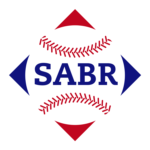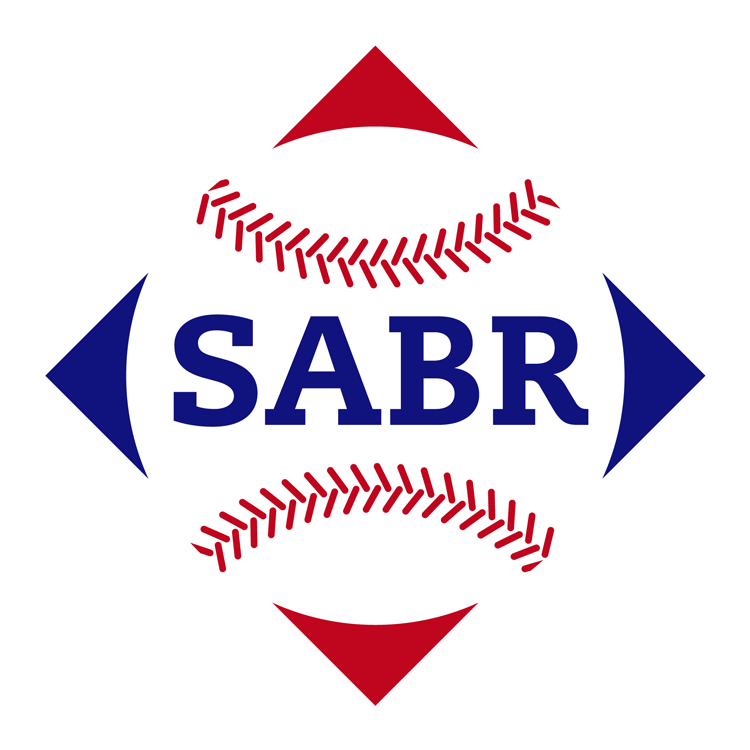My objective with this project is simple:
- simulate multiple seasons using “Original” and “Actual” team rosters that I’ve created using the Methodology outlined below
- compile and review those results, then seed the top teams in a playoff structure
- live-stream the playoff games and upload the resulting videos to YouTube
- have fun!
Methodology
The “Original” rosters are based on my research for “Hardball Retrospective“, where I assigned every Major League ballplayer to the first team that signed them to a professional MLB contract. Each player remains on their assigned “Original” team for the duration of their careers. To determine the rosters for my “Original” half-decade leagues, I utilized the following criteria:
- Half-decades were designated as 1900-1904, 1905-1909, 1910-1914, 1915-1919, etc. up to 2015-2019.
- minimum 40-man rosters for each “Original” half-decade team
- I take the top 40 players for each roster based on Win Shares using each player’s best season in the five-year period. For example, Mike Trout registered 42, 36, 30, 38 and 34 Win Shares from 2015 to 2019. On the Angels 2015-2019 “Originals” roster, Mike Trout’s 2015 season will be represented.
- Opening Day rosters consist of 25 players – either 14 batters / 11 pitchers or 15 batters / 10 pitchers.
- All players on Opening Day rosters for the “Originals” must have at least 5 Win Shares. Any roster / slot that fails to meet this requirement will be filled by a player who fell below the cut line for their team’s 40-man roster. “Fill-in” players are denoted in the game with a plus(+) sign at the end of their last name.
- Generally, each team will use a 5-man rotation and have 5 or 6 relief pitchers. Spot starter and bullpen roles are designated for most pitchers.
- I assign lineups versus right-hand and left-hand pitchers for each team.
- To introduce some randomness into the simulation, players can be optioned to the minors or recalled to the majors, but this is done at the lowest setting. There are no trades and players cannot be signed or released.
- Digital Diamond Baseball is my simulation of choice for this exercise. Before each simulated season, I set the schedule year to a number corresponding to the first year of the half-decade that I’m simulating plus the iteration number of the replay. For example, “8001” would be the first sim-season for the 1980-1984 replay, followed by “8002”, “8003”, etc. This allows me to utilize the Encyclopedia function to compile statistics over multiple seasons. When viewing the reports, the “year” can be referenced to see which teams finished first in the standings in “8001” or who won the MVP and Cy Young in a particular league during the “8009” season.
- I run the simulation for at least 10 seasons in each half-decade. The team with the highest victory total during a given season receives one point. If two or more teams tie for the lead, each receives 0.5 points. The team with the most points after 10 seasons declared the winner. However, if no team led or tied for lead in at least 4 out of 10 seasons, the simulation continues until one team reaches that criteria.
- Encyclopedia reports – for career leaders, I require a minimum of 3000 plate appearances or 1000 innings pitched. When exporting the career batting and pitching statistics for individual players, I reduce the minimums to 1500 plate appearances and 500 innings pitched.
- Playoff structure will reflect the MLB playoff and World Series during those timeframes with a few minor exceptions.
The rosters for my “Actual” half-decade leagues follow the majority of the rules outlined above. Here are the differences:
- The minimum 5 Win Shares requirement is dropped for the “Actuals” rosters. There are no fill-ins from other teams, so if the backup catcher on a team only tallied 1 or 2 Win Shares, it’s likely that the other catcher was so dominant that they will not require too many days off.
- Each team has a 40-man roster. Several teams carry 41 (when the backup catcher scenario arises, as I require every team to carry at least 2 active catchers).
Season recaps and links to the playoff videos will be posted here as I complete each replay. I will share the resulting standings, award winners, leaders and individual batting and pitching statistics along with team totals in batting, pitching and fielding.
1970-1974 “Originals” – Simulation Recap
1970-1974 “Originals” – Simulation Results
1970-1974 “Originals” – Point Totals
An epic battle ensued as the Giants, Red Sox and Twins vied for the crown. Boston (4 points) emerged as the champions after 16 seasons! The Giants and Twins placed runner-up with 3.5 points apiece, followed by the Athletics (2.5), White Sox (1.5), Braves (1) and Orioles (0.5). As mentioned in the Methodology section, the team with the highest victory total during a given season receives one point. If two or more teams tie for the lead, each receives 0.5 points.
1970-1974 “Originals” – Playoff Videos
Playoff Recap and World Series Game 1 (Pirates @ Red Sox)
World Series Game 2 (Pirates @ Red Sox)
World Series Game 3 (Red Sox @ Pirates)
World Series Game 4 (Red Sox @ Pirates)
A lifelong resident of central New Jersey, I enjoy spending quality time with my wife and three children. In my professional life I’ve worked for three local healthcare systems as a server and network administrator over the last 30 years. Co-chair of the SABR Games and Simulations Committee since August 2022 along with Mark Wendling.
My hobbies include baseball, statistics, computers and video games along with freshwater fishing. I have authored five books and contributed articles to Seamheads, Fangraphs and my site, Hardball Retro. Follow my HardballRetro channels on Twitch for live-streaming of classic and current baseball video games and view the resulting playthrough videos on YouTube!
Visit my Amazon author page to check out my books, promotional videos, and post a review if you're a Hardball Retro fan!
My Books:
"Hardball Retro’s Compendium of Baseball Video Games and Electronic Handhelds," published in September 2024 with co-author John Racanelli, is available in paperback and digital (Kindle) format at Amazon.com.Hardball Retro’s Compendium of Baseball Video Games and Electronic Handhelds was recognized with the 2025 Sporting News-SABR Baseball Research Award.
“Hardball Architects – Volume 1 (American League Teams)”,published in July 2020, is available in paperback and digital (Kindle) format at Amazon.com.
“Hardball Architects – Volume 2 (National League Teams)”,published in April 2022, is available in paperback and digital (Kindle) format at Amazon.com.
“Hardball Architects” examines the trades, free agent acquisitions, draft picks and other transactions for the 30 Major League Baseball franchises, divided into a 2-volume set (American League and National League). All key moves are scrutinized for every team and Sabermetric principles are applied to the roster construction throughout the lifetime of the organization to encapsulate the hits and misses by front office executives.
“Hardball Retroactive”,published in June 2018, is available in paperback and digital (Kindle) format at Amazon.com. A cross-section of essays that I penned for Seamheads.com along with my Baseball Analytics blog spanning nearly a decade touching on subjects including "Taking the Extra Base", "General Manager Scorecard", "Worst Trades", "BABIP By Location" and "Baseball Birthplaces and the Retro World Baseball Classic". Rediscover your favorite hardball arcade and simulations in "Play Retro Baseball Video Games In Your Browser" or take a deep dive into every franchise's minor league successes and failures in relation to their major league operations in "Minors vs. Majors".
“Hardball Retrospective” is available in paperback and digital (Kindle) format at Amazon.com.Supplemental Statistics, Charts and Graphs along with a discussion forum are offered at TuataraSoftware.com. In Hardball Retrospective, I placed every ballplayer in the modern era (from 1901-present) on their original teams. Using a variety of advanced statistics and methods, I generated revised standings for each season based entirely on the performance of each team’s “original” players. I discuss every team’s “original” players and seasons at length along with organizational performance with respect to the Amateur Draft (or First-Year Player Draft), amateur free agent signings and other methods of player acquisition. Season standings, WAR and Win Shares totals for the “original” teams are compared against the real-time or “actual” team results to assess each franchise’s scouting, development and general management skills.
Don Daglow (Intellivision World Series Major League Baseball, Earl Weaver Baseball, Tony LaRussa Baseball) contributed the foreword for Hardball Retrospective. The foreword and preview of my book are accessible here.
“Hardball Retrospective - Addendum 2014 to 2016”supplements my research for Hardball Retrospective, providing retroactive standings based on Wins Above Replacement (WAR) and Win Shares (WS) for each "original" team over the past three seasons (2014-2016). Team totals from 2010 - 2013 are included for reference purposes. “Addendum” is available in paperback and digital (Kindle) format at Amazon.com.
Contact me on BlueSky - @hardballretro.bsky.social
- Derek Bainhttps://sabrbaseballgaming.com/author/dbain21/
- Derek Bainhttps://sabrbaseballgaming.com/author/dbain21/
- Derek Bainhttps://sabrbaseballgaming.com/author/dbain21/
- Derek Bainhttps://sabrbaseballgaming.com/author/dbain21/


